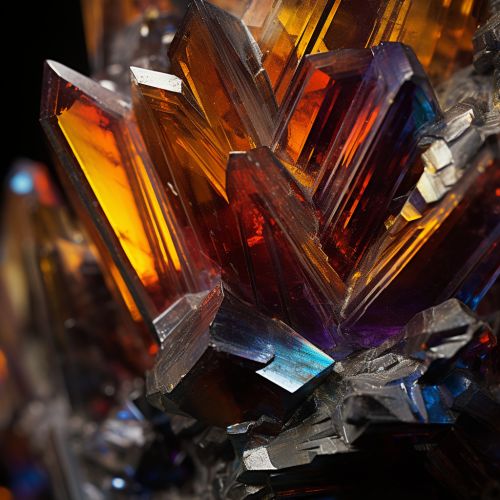Amphibole
Introduction
Amphibole is a group of inosilicate minerals, forming prism or needlelike crystals, composed of double chain SiO4 tetrahedra, linked at the vertices and generally containing ions of iron and/or magnesium in their structures. Amphiboles can be green, black, colorless, white, yellow, blue, or brown.
Classification
The name amphibole comes from the Greek 'amphibolos', meaning 'ambiguous', in allusion to its variable composition. Amphiboles are divided into two subgroups, the ortho-amphiboles, which are orthorhombic, and the clino-amphiboles, which are monoclinic. The International Mineralogical Association currently classifies amphiboles as a mineral supergroup, within which are two groups, the Amphibole Group and the Prehnite-Pumpellyite Group.
Structure and Composition
Amphiboles crystallize into two crystal systems, orthorhombic and monoclinic. In chemical composition and general characteristics they are similar to the pyroxenes. The chief differences from the pyroxenes are physical and crystallographic features. Amphiboles are distinguished from pyroxenes by their crystal habit, optical properties, and wider range of chemical composition.


Occurrence and Formation
Amphiboles are found primarily in metamorphic and igneous rocks. They also occur in many types of sedimentary rocks, but are most abundant in metamorphic rocks. Amphiboles are an important component of many igneous rocks, including granite, diorite, andesite, and basalt. They are also found in metamorphic rocks such as schist and gneiss.
Economic Importance
Amphiboles are not in themselves valuable ores. However, they are important in geology for their characteristic associations with certain types of rock, and for their characteristic alteration products, which are often valuable ores. For example, the amphibole mineral tremolite sometimes occurs in the same environments as the valuable asbestos mineral chrysotile.
Health Hazards
Some amphiboles, including members of the asbestos group, are known to be human carcinogens. The inhalation of amphibole asbestos fibers can lead to asbestosis, lung cancer, and mesothelioma. The World Health Organization and the International Agency for Research on Cancer have classified all forms of asbestos, including amphibole asbestos, as carcinogenic to humans.
